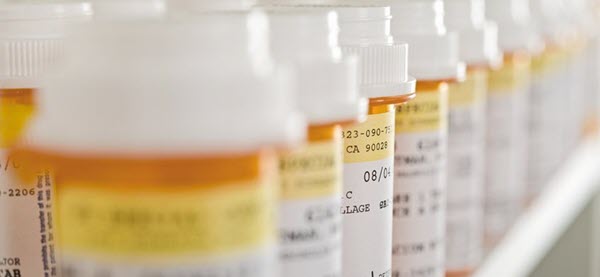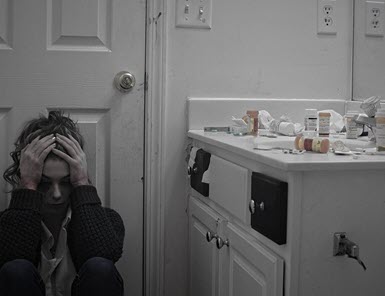 I’m devoting the first newsletter of this New Year to the current state of Psychopharmacology – a round-up so to speak – of the medication management trends that I believe best define where the profession is as we embark upon 2019. Here’s my review of the 5 key areas – depression and antidepressants; bipolar disorder and mood stabilizers; anxiety and anxiolytics; psychosis and antipsychotics; ADHD and stimulants:
I’m devoting the first newsletter of this New Year to the current state of Psychopharmacology – a round-up so to speak – of the medication management trends that I believe best define where the profession is as we embark upon 2019. Here’s my review of the 5 key areas – depression and antidepressants; bipolar disorder and mood stabilizers; anxiety and anxiolytics; psychosis and antipsychotics; ADHD and stimulants:
Depression; Antidepressants
Depression is confusing, and there is no general consensus as to what’s going on or even what’s wrong with the brain. Where, in the brain, would we biopsy a depressed person? What specific area? Nobody knows, because it’s really hard to identify where the specific problem exists. Depression is likely a number of different illnesses — in the future, I believe we can expect different nomenclature for different types of depression (Hormonal-induced depression; inflammatory depression).
As for antidepressant treatment, an exhaustive study published last year in the highly respected British journal, The Lancet, concluded that “antidepressants provide small or modest efficacy in the majority of adult users.” Up to 60 percent of antidepressant users don’t achieve symptom remission, thus benefitting only partially. Lancet’s conclusion amplifies the notion that the serotonin reuptake inhibition theory for improving depressive symptoms is all but dead. A more relevant alternative explanation is that antidepressants stimulate nerve cells to grow and branch out providing what’s known as neuroprotective benefits — sort of like what fertilizer does for our lawns. As a result, I’ll often hear antidepressant users respond with comments like “I don’t feel as though I have to dig myself out of a hole every morning,” “life just seems a lot smoother,” “I’m coping better.”
Bipolar Disorder; Mood Stabilizers
Bipolar disorder is very difficult to diagnose, and even if you encounter patients claiming they have been previously diagnosed with the disorder, it’s still important to review their history and not take them at their word. Just because they’ve carried the diagnosis, doesn’t mean they actually have it. When attempting to diagnose bipolar, be as systematic as possible, and work in reverse at first — begin by focusing on previous depressive episodes. Do your best to figure out how many depressive episodes they’ve had, and what percent of time they’ve experienced depression. Then move on to assessing for mania, and to what extent manic periods have interfered with functioning. Here’s my favorite go-to question: “do you feel like the Energizer bunny from time-to-time, and how has this influenced your behavior?”
Lithium remains the gold standard for acute mania and bipolar maintenance and that’s not going to change. Unfortunately, the drug’s use is often eschewed by primary care prescribers because lithium carries the baggage of frequent blood level monitoring — at least at first — and troublesome side effects. Lithium substantially decreases the risk of suicide in bipolar patients. Seroquel immediate release and the XR formulation, Symbyax and Latuda are the best available options for bipolar depression.
Anxiety; Anxiolytics
 There are many manifestations of anxiety, (Acute distress, Panic, GAD, OCD, PTSD, etc.) and all of them are fear or trauma-based at least to some extent. Anxiety is fraught with uncertainty, progresses toward fight-flight-freeze phenomena and becomes a disorder when someone changes their behavior to mitigate the anxious feelings.
There are many manifestations of anxiety, (Acute distress, Panic, GAD, OCD, PTSD, etc.) and all of them are fear or trauma-based at least to some extent. Anxiety is fraught with uncertainty, progresses toward fight-flight-freeze phenomena and becomes a disorder when someone changes their behavior to mitigate the anxious feelings.
The core of treating anxiety successfully, regardless of its manifestation, is to utilize threat assessments. Anxious people need to be instructed that when they’re anxious, their brain has them thinking they are in danger when they’re really not. Work toward getting them to acknowledge their overreactions to perceived threats. In this way, they will learn to evaluate how significant (or insignificant), a perceived threat really is when they encounter anxious moments.
As for medication, benzodiazepines (Valium, Xanax, Ativan etc.) are still widely used. The number of people actually abusing benzos alone remains rather small. Abuse issues aside, these drugs are relatively safe, but there’s long been a consensus that they’re best used short-term for an acute, time-limited stressor. The “quieting” SSRI antidepressants though, (Paxil, Celexa, Lexapro) are currently the go-to agents for anxiety treatment.
Psychosis; Antipsychotics
Schizophrenia affects multiple brain systems — limbic, frontal cortex, striatal – making it very difficult to understand within the context of its many symptoms. It is very difficult to treat successfully via medication management and there is variability for sure when it comes to who responds to what and under what circumstances.
Clozaril remains the gold standard here — maintaining its position since 1989 in this regard. But noncompliance rates are high because of potentially horrible side effects and many of those suffering with schizophrenia complain that the treatment is worse than the disease. There are a dozen second-generation antipsychotics available on the U.S. drug market, most of which are “me-to” and unable to distinguish themselves from the rest of the pack when subjected to clinical scrutiny. Clinically, we are many orders of magnitude away from untangling this disorder.
ADHD; Stimulants
Before conducting an ADHD assessment, keep in mind that most symptoms are non-specific and can be present in many other psychiatric disorders – or even present in people without any disorder at all. ADHD is a neurodevelopmental disorder for sure, but there’s another “strain” emerging, AADD – acquired attention deficit disorder, describing how excessive screen time is rewiring kids’ brains. These “new brains” are literally growing new branches to accommodate the demands of cyberspace – with its tweets, texts, posts and “likes.” The result: more and more kids are becoming emotionally fragile, forgoing face-to-face socializing in favor of burying their heads in tablets and smartphones.
Two categories of stimulants are routinely prescribed: the Ritalin (methylphenidate) products and the Dexedrine (dextroamphetamine) products. Concerta has long been a star in the methylphenidate category and Adderall XR in the dextroamphetamine category. New stimulants are, for the most part, a group of remixed products from these 2 categories. For example, Mydayis has a16-hour duration, which is unique among the newer long-acting versions of Adderall. And Jornay PM, due to come to market this year, is set to offer a novel solution to the early morning frenzy experienced by kids getting ready for school. Taken at night, it begins working when the child or adolescent wakes up some 8 or so hours later. Jornay PM is a methylphenidate product.
So there you have it — a synopsis of the “state” of Psychopharmacology as we begin 2019. More to come, of course, in future newsletters as new developments unfold.
Attribution Statement:
Joe Wegmann is a licensed pharmacist & clinical social worker has presented psychopharmacology seminars to over 10,000 healthcare professionals in 46 states, and maintains an active psychotherapy practice specializing in the treatment of depression and anxiety. He is the author of Psychopharmacology: Straight Talk on Mental Health Medications, published by PESI, Inc.
To learn more about Joe’s programs, visit the Programs section of this website or contribute a question for Joe to answer in a future article: joe@thepharmatherapist.com.